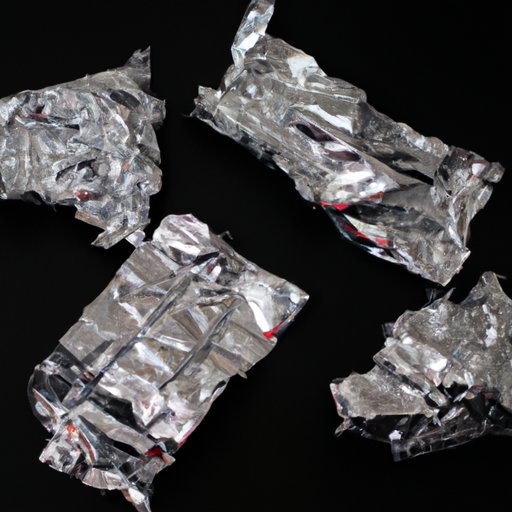
Introduction
Aluminum foil is a staple in most kitchens. Whether you use it for cooking, storing food, or wrapping leftovers, it’s an incredibly convenient tool. However, the question of whether or not aluminum foil can be recycled is an important one. In this comprehensive guide, we will explore everything you need to know about recycling aluminum foil.
The Dos and Don’ts of Recycling Aluminum Foil
Recycling aluminum foil is possible, but there are specific guidelines you need to follow to ensure that it’s done correctly. First and foremost, it’s essential to know which types of aluminum foil are recyclable. Generally speaking, clean aluminum foil that’s free from food debris, grease, and other contaminants can be recycled, while foil with food residue on it should be discarded in the trash.
Before recycling aluminum foil, it’s essential to rinse it clean of any food debris. If you do find yourself with heavily soiled aluminum foil that you can’t recycle, it’s best to throw it in the garbage instead of contaminating a whole batch of recyclable materials.
When recycling aluminum foil, it’s essential to keep it separated from other recyclable materials, such as paper and plastic. You can use magnets to check if aluminum foil contains a non-aluminum core, such as a plastic lining. If you do find aluminum foil with a non-aluminum core, it’s not recyclable and should be discarded in the trash.
Why Recycling Aluminum Foil Matters and How You Can Make a Difference
Recycling aluminum foil is crucial for reducing pollution and conserving natural resources. According to the EPA, recycling aluminum saves 90% of the energy that would be required to produce new aluminum. Not only does this conserve energy, but it also reduces greenhouse gas emissions.
Small changes in recycling habits can make a big difference. If every American household recycled just one aluminum can per day, the energy saved would be enough to power 1.3 million homes for a year. The same principle applies to aluminum foil; every effort to recycle counts towards the larger effort to reduce waste and conserve resources.
The Upcycling Potential of Aluminum Foil
Aluminum foil has a surprising number of upcycling uses that can help reduce waste and save energy. Some ideas include turning it into a DIY reflector to improve indoor lighting, shaping it into a DIY cookie cutter, or using it as a makeshift funnel. The possibilities are endless, and upcycling aluminum foil can be a fun and creative way to repurpose what you might otherwise throw in the trash.
Common Myths About Recycling Aluminum Foil, Debunked
There are several myths about recycling aluminum foil that persist, such as the idea that it needs to be completely flat or the notion that foil with food residue isn’t recyclable. However, it’s essential to know the facts.
Aluminum foil can be recycled even if it’s crumpled or folded, as long as it’s free from contamination. However, recycling aluminum foil that already has food residue or grease on it could contaminate the entire recycling process and should be thrown in the trash.
The Cost-Benefit Analysis of Recycling Aluminum Foil
Recycling aluminum foil is economically beneficial for everyone involved. Recycling facilities can save money on manufacturing new materials and cut down on environmental costs, while individuals can benefit from the reduced energy use and lower costs of recycled materials. The wide availability of recycled aluminum foil provides an affordable alternative to virgin aluminum without sacrificing quality or performance.
Innovations in Aluminum Foil Recycling: What’s Next?
Recent advancements in recycling technology have made it even easier to recycle aluminum foil. For example, some recycling facilities are utilizing eddy current separators to help separate aluminum foil from other materials accurately. As technology continues to advance, it’s possible that recycling aluminum foil will become even more efficient and effective in the future.
Reducing Your Carbon Footprint with Aluminum Foil Recycling
Incorporating aluminum foil recycling into your daily life is easy when you know the right steps to take. To get started, simply rinse aluminum foil clean, separate it from other recyclables, and place it in your recycling bin. By taking these small steps, you can make a big impact on reducing your carbon footprint and conserving natural resources.
Conclusion
Recycling aluminum foil is crucial for reducing waste and conserving energy. By following the guidelines outlined in this guide, you can ensure that your efforts to recycle aluminum foil are effective and impactful. Remember, every small contribution counts towards the larger effort to reduce waste and protect our planet.





